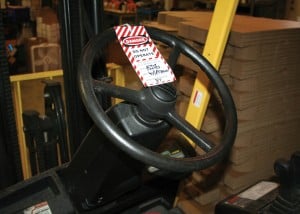
Everything we do is communication. And it is no wonder that research studies point to 70% of workplace mistakes being caused by poor communication.
How we start our...
 Now that you have worked out your topic for your next routine workplace safety campaign, it's time to sit down and start writing. Here are some tips that have been designed for routine workplace communication initiatives (and not for large safety communication programs that require a lot of change, for large scale initiatives go to "14 Tips to Launch a New Safety Initiative").
Now that you have worked out your topic for your next routine workplace safety campaign, it's time to sit down and start writing. Here are some tips that have been designed for routine workplace communication initiatives (and not for large safety communication programs that require a lot of change, for large scale initiatives go to "14 Tips to Launch a New Safety Initiative").
1. Work out your main communication objective and your audience. Keep yourself focused on what your are communicating about and who to. Work out your key goals and keep these in your mind while designing your campaign (check your safety figures to see what issues you might be having that needs to be addressed). Get out a picture or a photo of the person who represents your target audience. Master communicators find it very useful and inspiring to look at these photos, while trying to come up with the right wording. You can even label them and refer to them affectionately, as “Cam the Construction Man” or “Patty the Packer”.
2. Research your topic – Find as much information as you can about the topic and look for interesting facts and figures. What can you say that topic that's unexpected or different? How can you break a pattern and get people's attention? Use this information to write your headline. But make sure you develop one core message. Often, it’s tempting to believe we have lots to say and we feel that we need to talk about everything around that topic to communicate safety. Yet, research has proven that too many messages confuse people. Write your communication with one clear message in mind. Every time you add content question whether it is part of your core message. Remember, simple clear messages are easy for people to understand and recall. Steve Jobs was a master of the core message in each of his famous Apple presentations. Think “1000 songs in your pocket” for the iPod.
3. Keep your writing short – Once the brain has to work hard at what communication is trying to say, it begins to lose interest. Always ensure your communication is clear and people don’t need to work at deciphering the information. Use short words (5 characters or less), sentences (17 words or less) and even paragraphs. Be friends with white space avoiding cramming lots of text into your communication. Write at the reading level of a high school student. And use positive language.
4. Write the announcement - Now that you've done some research and you've honed your writing skills, it's time to get writing. Remember, how can you make the headline interesting? What can you say that is counter-intuitive to the message? Common sense will not get you noticed. What interesting facts do you have about the safety focus that will grab people's attention? Use the funnel method of writing where you explain your core message in your first paragraph (what, when, why, how where) and then write your medium important information in the next paragraph, followed by the third important information etc. Avoid giving lots of details in the first paragraph. Instead, make the first paragraph interesting, so that it draws people into the detailed information (but not necessarily the most important information).
Here's an example in relation to slips, trips and falls:
Falling Down Stairs kills more people than Sharks
Did you know that you're more likely to injure yourself by falling down stairs than by being attacked by a shark? Stairs represent a serious injury risk and are one of the most common causes of injury at the workplace.
And here at XYZ, they represent our most common form of injury. You can avoid falling down the stairs by:
Always having three points of contact
Avoiding talking or texting while going up or down the stairs
Ensuring that stairs are clear and are not used for storage of items.
 5. Use lots of visuals – Humans recall and understand visual information much faster than words. And they grab our attention. Always include a photo or picture that best represents your information. Where possible, use human faces, as we are very drawn to looking at other people. Emotional imagery also is more likely to get people to change. Always consider including different colours, video, diagrams and pictures whenever you need to create high impact communication materials.
5. Use lots of visuals – Humans recall and understand visual information much faster than words. And they grab our attention. Always include a photo or picture that best represents your information. Where possible, use human faces, as we are very drawn to looking at other people. Emotional imagery also is more likely to get people to change. Always consider including different colours, video, diagrams and pictures whenever you need to create high impact communication materials.
6. Repeat your message in many different ways – Advertisers know that for humans to even recall a television ad they need to see it at least six times. And the more they are exposed to the ad in different formats such as radio, bus posters and magazine ads, the better the results. With any campaign you create, you will also need to create a calendar of communication events. Ideally, you must plot out a different communication activity every week for the next 2 months with the same consistent message. Include posters, toolbox meetings, video content, personal letters from the General Manager, email newsletters, stickers and staff stories. Remember, frequency is key and using a variety of communication formats. Make sure all of the communication has the same consistent core message with matching visuals.
Writing safety communication information generally isn't the most favourite job of a safety professional. Rather than approach safety communication in the usual fashion and producing mediocre results, use these tips to engage your staff and make communication fun.


Everything we do is communication. And it is no wonder that research studies point to 70% of workplace mistakes being caused by poor communication.
How we start our...

When it comes to warnings about potential dangers or giving people an important instruction on site, you have to rely on labels and signs to communicate. A sign's...